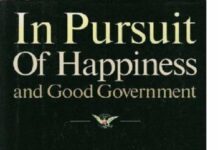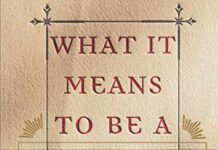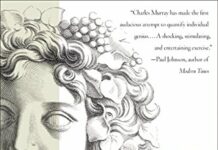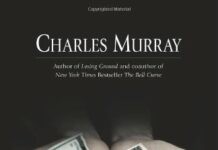
Ebook Info
- Published: 2012
- Number of pages: 418 pages
- Format: PDF
- File Size: 5.82 MB
- Authors: Charles Murray
Description
NEW YORK TIMES BESTSELLER • A fascinating explanation for why white America has become fractured and divided in education and class, from the acclaimed author of Human Diversity.“I’ll be shocked if there’s another book that so compellingly describes the most important trends in American society.”—David Brooks, New York TimesIn Coming Apart, Charles Murray explores the formation of American classes that are different in kind from anything we have ever known, focusing on whites as a way of driving home the fact that the trends he describes do not break along lines of race or ethnicity.Drawing on five decades of statistics and research, Coming Apart demonstrates that a new upper class and a new lower class have diverged so far in core behaviors and values that they barely recognize their underlying American kinship—divergence that has nothing to do with income inequality and that has grown during good economic times and bad.The top and bottom of white America increasingly live in different cultures, Murray argues, with the powerful upper class living in enclaves surrounded by their own kind, ignorant about life in mainstream America, and the lower class suffering from erosions of family and community life that strike at the heart of the pursuit of happiness. That divergence puts the success of the American project at risk.The evidence in Coming Apart is about white America. Its message is about all of America.
User’s Reviews
Reviews from Amazon users which were colected at the time this book was published on the website:
⭐”People like to be around other people who understand them and to whom they can talk.” (Kindle Locations 894-895). Sales of Charles Murray’s book, Coming Apart: The State of White America, 1960-2010, would have suffered if he had only written this sentence but the response wouldn’t have been nearly as animated. However, Charles Murray and his writings have generated energetic responses for over 20 years. This paper briefly examines the truism of “birds of a feather” and the evidence Murray uses to justify his contention. I will also address my personal response and how it affects my duty toward social justice.From 2000 until today I have lived approximately 10 years outside of the United States. I never “lived” in the United States during the past 12 years; I visited. When I was home, I was either celebrating holiday or beginning a new transition back overseas. Therefore I didn’t invest myself; I didn’t make the point to overtly observe nor acutely feel some of the growing divisions. Only in this last year, while transitioning to becoming an American again, have these dividing lines been obvious. This realization provoked me to read several interesting books detailing these apparent ruptures. Coming Apart has been an interesting read, because it challenges some of my more progressive leanings. However, the argument Murray makes is compelling, as it addresses some of the more dangerous topics in 21st century discourse: race, intelligence, and government intervention.Murray’s thesis introduces two hypothetical cities: Fishtown and Belmont. These two hypotheticals are based upon real cities with a few alterations: all the inhabitants are white and the age range is 30-49. Murray, whose previous bestseller The Bell Curve, was roundly criticized for drawing what some considered racist conclusions. When recently interviewed, Murray explained he limited his findings to white America in an attempt to avoid such claims. It is important to remember this caveat when looking at our first city, Fishtown 2010.Fishtown has seen better days. It has been ravaged by a poor economy, high crime rate, and what some term a systematic moral decay. 40 percent of all children are born outside of marriage. This was once called wedlock, but that word now carries a pejorative connotation. Those who do marry will probably divorce. Fishtown residents are the working class, where 30 percent have at most a high school diploma and work (maybe) in a low paying job. Consequently, their income falls in the 8th percentile nationally. Also, two-thirds of the people who live in Fishtown are overweight and about a third are obese (Kindle Locations 581-582).Belmont, our other real/fictional city, is the home to what Murray terms the cognitive elite. He defines the cognitive elite as the 20 percent of the American population who have a college degree and who work in occupations requiring a specific type of knowledge. These residents usually work in the fields of finance, IT, government, law, and medicine. These professionals stay married at a far higher rate than the working class in Belmont. They attend a religious service more often than the counterparts in Belmont. They are in the 97th percentile economically. Part of the reason their income is higher is because they work hard and for long hours. Another interesting distinction is Belmont residents are fanatic about monitoring caloric intake, eating whole grains, green vegetable, while avoiding red meat, processed food, and butter (Kindle Locations 605).The city of ?, in which I grew up, is considered a Superzip. A SuperZip is where residents score between the 95th through the 99th percentile on a combined measure of income and education. Interestingly from Potomac to Ellicott City, Maryland is the largest contagious grouping of SuperZips in the United States. This means you can literally drive from Potomac to Ellicott City without leaving an area where 95 percent of its inhabitants are richer and better educated than all but a mere 5 percent of the overall population (Kindle Locations 1428-1429).Murray takes us back to the idyllic year of 1963. A charming and good-looking president was gearing up for what everyone thought would be a contentious 1964 election. Three television stations ruled the airwaves. Walter Cronkite was not yet Uncle Walter. The Perry Como Show or Perry Mason were must see television. The white and blue collar often lived, worked, and played together. Certainly there was economic disparity but how pronounced was it? The most expensive homes in Chevy Chase cost $500,000 (adjusted to 2010 dollars). The “rich” drove a $50,000 Cadillac (adjusted), or a Buick if they didn’t want to be perceived as ostentatious. “In Washington newspaper advertisements for November 1963, gas was cheaper, at the equivalent of $2.16 per gallon, but a dozen eggs were $3.92, a gallon of milk $3.49, chicken $2.06 a pound, and a sirloin steak $6.80 a pound”(Kindle Locations 449-451). These prices demonstrate that cost of living in 1963 was roughly equivalent to 2010. Another important fact to remember was that people working in high paying white collar professions made about $62,000. A little bit further up the salary food chain reveals fewer than 8 percent of American families made more than $100,000, and about 1 percent made $200,000 (Kindle Locations 424-426). The most obvious difference between the rich of 1963 and everyone else was that they just had more money (Kindle Location 489). This minor difference was soon to be replaced by countless others.The OWS movement was intensifying soon after my return stateside. I spent several months discussing with friends. Slowly, it became clear how contentious economic theory is for many people. I often remarked, “It is called economic theory for a reason,” only to be corrected on this naïve response. I would retort how the machinations of human behavior with the global exchanging of goods and services could be anything other than a theory. It seemed everyone was a politician, giving the party-line answer to their constituency. All I knew was that I wasn’t running for office and was genuinely interested in the OWS demands.”Homogamy refers to the interbreeding of individuals with like characteristics. Educational homogamy occurs when individuals with similar educations have children. Cognitive homogamy occurs when individuals with similar cognitive ability have children” (Kindle Locations 1034-1036). A college education in 1960 was rare. Those who had earned a college degree numbered less than 10 percent and almost certainly didn’t have parents who also were college graduates. It hadn’t been that long when the men of Harvard and the women of Wellesley were not cognitively different than graduates of a state university. Murray writes that the assassination of the temperamentally non-confrontational Kennedy and the subsequent replacement with Lyndon Johnson “the master legislator,” a perfect storm for the “Coming Apart” was approaching (Kindle Location 204).After Dallas, November 1963, something unique began to occur. Large numbers of smart people began to send their children to the same schools. Murray writes, “The average Harvard freshman in 1952 would have placed in the bottom 10 percent of the (Harvard) incoming class by 1960” (Kindle Location 931). Beginning in the 1960’s the Ivy League became the meeting place for the cognitive elite. “Increased educational homogamy inevitably means increased cognitive homogamy” (Kindle Location 1052). It is from this sentence Murray’s thesis springs. Children of high IQ parents, often successful and with money, began meeting on campuses reserved for biology’s finest. Below are two quotes, the first detailing Yale in 1961 and the second detailing the 105 best universities in the United States in 1997.The stratification became still more extreme during the 1960s. In 1961, 25 percent of Yale’s entering class still had SAT verbal scores under 600. Just five years later, that figure had dwindled to 9 percent, while the proportion of incoming students with SAT verbal scores from 700 to 800 had increased from 29 to 52 percent (Kindle Locations 941-944).Together, just 10 schools took 20 percent of all the students in the United States who scored in the top five centiles on the SAT or ACT. Forty-one schools accounted for half of them. All 105 schools, which accounted for just 19 percent of all freshmen in 1997, accounted for 74 percent of students with SAT or ACT scores in the top five centiles (Kindle Locations 953-956).I remember Michael Steadman, a Penn graduate, and his wife Hope Murdoch, his Princeton educated wife. The television show thirtysomething was filled with smart, highly educated people talking about literature, child-rearing philosophies, while having Native American blankets in their homes as decoration. I remember watching many of these episodes as a college student. I still remember Michael and Hope having a heated argument whether to raise their daughter in the Jewish or Christian faith. I am not ashamed to say I remember the night Gary–Michael’s best friend–died. Michael and Hope’s conversation about her miscarriage is easily recalled. Michael consoled her by saying, “It is okay, we will have another baby,” to which Hope replied, “But it won’t be this baby.” Though 18 at the time, I remember thinking how their responses felt familiar and authentic. If Michael and Hope were real, we can safely assume they are rich ($500,000 plus combined income), still married, and that their daughter eventually went to one of the 105 schools mentioned above. “The reason that upper-middle-class children dominate the population of elite schools is that the parents of the upper-middle class now produce a disproportionate number of the smartest children” (Kindle Locations 1021-1023). I will let the implications of that quote linger.Michael and Hope were industrious, honest, faithful, and spiritual people. Murray would contend they embody the foundational traits upon which this country was built. They are emblematic of our “fictional” city Belmont. Sadly, I guess, the Steadman’s long moved out of Fishtown, never to return. The once relatively heterogeneous neighborhoods of the 60’s became increasingly homogeneous, both ways. “It is not the existence of classes that is new, but the emergence of classes that diverge on core behaviors and values–classes that barely recognize their underlying American kinship” (Kindle Locations 239-240). Is there a way out of this spiral toward irrevocable division? Have we as a society already laid the foundation of our demise? Has the rewarding of the rich been more destructive or the enabling of the poor? Answers to these questions reflect our most deeply held convictions. As an educator, and more importantly a father, I must consider my legacy? Am I optimistic about this grand experiment called The United States of America? Is there anything I can accomplish or should my focus be concentrated on the people and circumstances I have direct contact?My idea of social justice is that it needs to evolve according to context and to not become overly dogmatic. The debate this book has sparked is healthy. However, the tone of the debate disturbs me. I am often unable to decipher civility when people discuss important matters. Hidden agendas, obvious neurosis, poor inter-personal skills, and shallow understanding inflict the blogospheres and the airwaves. It is in these weak moments I most empathize with the residents of Belmont. Who does not crave tranquility and safety? If these are options, why wouldn’t I choose them? However, Murray suggests we do the opposite. He believes Belmont, with its hard-working and faithful residents, needs to re-engage the wider society.I am not sure if I am optimistic toward this proposal. Though this might be the solution, it is its implementation that proves problematic. Like Murray I tend to be a libertarian when it comes to how we address social ills. Murray believes it was government activism that precipitated many of the current problems. Johnson’s The Great Society expanded the role of government in numerous ways. Many “conservatives” contend these policies had the opposite effect of what they originally intended. As Ronald Reagan once remarked, “We fought a war on poverty and poverty won.”This paper is not my treatise on the role of government, but rather my role as a citizen. A few principles to which I adhere are that social constraints are effective deterrents to many types of dangerous behaviors. I believe community involvement builds neighborhood cohesion. I also contend active parents increase educational opportunities (not just for their own children). Lastly, implementation of cooperative educational models makes a difference in assessment scores. The task is daunting and the process long, but changes in society do occur. I take away from this book a renewed sense of just how important an educator’s role is in our very real cities.
⭐June 2, 2012Who “Done” It? Who Did in the “White Working Class?” They Did It to Themselves, according to Charles Murray.Charles Murray’s new book is actually a book about change, how some parts of American society, like the upper middle class residents of Belmont, Massachusetts, have done very well, and others, the working class residents of Fishtown, a neighborhood in Philadelphia, have not. But it’s also, implicitly at least, about causality: a book about “winners and losers” between the years 1960-2010, and he is covering a span of American cultural and economic life which saw enormous changes in both. But which sphere of human activity drove the changes? Murray says it was character changes in the working poor that did them in, while the Belmontians thrived by their retention of the right values. If only, if only, the poorer Philadelphians could have kept the virtues of our “Founding Fathers,” they would have done much better than portrayed here. This, readers, is one gigantic fairy tale, and if the book does not sell well, I’ll personally recommend Murray as an advisor to Colonial Williamsburg or Disneyland – and Mr. Murray – you of course will be “free to choose” which one you fits you the best.Not so long after I had finished reading Coming Apart, I attended a conference at the National Press Club in Washington, DC, on the Renaissance of American Manufacturing, on March 27, 2012. One of the featured speakers was Gene Sperling, who is the Director of the National Economic Council in President Obama’s administration. In his Keynote Speech, Mr. Sperling offered the assembled a surprising statistic on American manufacturing jobs, asserting that between 1965-1999 – not so much different from Mr. Murray’s dateline brackets of 1960-2010 – the number of such blue collar jobs remained fairly steady: at about 17.3 million. Now that doesn’t sound terribly disruptive, does it, something that might contribute to urban decline or diminishment of working class morale and values? Of course not.But the real values for Mr. Sperling, like any establishment economist, are those that flow from capitalism’s “creative destruction,” its competitive innovations and products, its constantly chasing greater efficiency, and, as just a little aside, chasing those higher profits as well. And he wanted to reassure his audience that these jolts in greater efficiency- called productivity – don’t destroy jobs, they create them.So, in fact, when I heard Sperling speak, I had already been “fishing in the stream of deindustrialization” thanks to my astonishment over Murray’s account of “white working class” decline in Coming Apart. The south “Pole Star” for the proles in his book is “Fishtown,” a neighborhood of Philadelphia, one of the classic working class ethnic ones; at the opposite pole is the affluent upper-middle class town of Belmont in Massachusetts. Now the astounding thing about Murray’s methodology is his absolute dismissal of deindustrialization’s impact on the work ethic and morale of Fishtown’s working class. To give you the sense of his schema, he remarks at one point that the divorce rate during the Great Depression didn’t rise, so why would a comparatively little thing like the loss of good industrial jobs in the 1970’s be an excuse to shun marriage and work?Of course, in Murray’s chain of causality, it’s character that still counts the most, and the upper-middle class Belmontians have it but the proles in Fishtown have lost it. But there is no mention of Garry Wills’ Bare Ruined Choirs (1974) in Murray’s account, a shame, since a history of the decline of the Catholic Church surely must have had some effect on the predominantly Catholic working class. Murray certainly reminds us of the importance of Catholic institutions in trying to hold things together, certified by the stories he has Fishtown residents tell and that he chose to emphasize in his book.In Murray’s world, capitalism is a force of nature, unquestioned in its power and scope; people don’t challenge it, they adjust to its rapid pace of change, or else…But might not the very products of capitalism – the auto, the pill, the credit card – for example – work to change morals and therefore character? Might the very productivity and abundance of capitalism require a shift in habits (Catholics will pardon the pun, I hope), say from the thrift and scarcity of a capitalism starting to free itself from the old medieval restraints in the 15th and 17th centuries, or the lost world of Thomas Jefferson and Andrew Jackson many centuries later – to the increased urgings to spend so that poor old Henry Ford could clear the model T’s off the assembly line? And did not the car and the pill, along with the affluence advertised in Mr. Heffner’s Playboy, contribute just a bit to the sexual revolution, which started – sorry, Mr. Murray – at least by the 1920’s but did not reach full flower until the 1960’s and most forcefully the 1970’s? And wasn’t that the decade that Gary Wills says the Catholic Church was coming apart, losing priests and nuns and Catholic schools at an alarming rate, with the Church denouncing the pill and proving that it was having great troubles adjusting to the changes in American society? So if one of the great religious foundations of American working class life was foundering, despite its strong conservative values…Strangely also, he pays no attention to the tremendous impact of race (in this volume; previous ones I’ll leave to longstanding controversies), with five million rural, southern black folks arriving in the northern and Midwestern cities, in what would become the “rustbelt cities,” just at the time when they begin their decline – as Nicholas Lemann tells the tale in his 1991 book The Promised Land. And what sent them north in such numbers? How about a good capitalist invention: the mechanical cotton picker, c.1944 in the Mississippi Delta? It helped end sharecropping, thankfully, as a “way of life,” if that is the right term. But the life the displaced black sharecroppers found in northern cities was not much to write home about. How can one write about white working class Philadelphians and not write about race; the city was race obsessed in the post-World War II world, which included the 1960’s and 1970’s? And am I suggesting at least a faint connection between Sperling and Murray in their minimization of deindustrialization’s impact on the working class, on American urban history and race relations, just a whiff of the alliance between the American “Center and Right” on many matters economic? Yes I am.Now let me add a personal touch on this topic of industrial decline and working class morale, stemming as it also does, in part, from my role as a commentator on Jefferson Cowie’s fine book, Stayin’ Alive: the 1970’s and the last Days of the Working Class, in my essay Pre-Occupied of November 28, 2011.I grew up just outside Trenton, NJ, another once significant old manufacturing city, whose industries peaked, like Philadelphia’s, in the 1920’s! Although knowledgeable commentators tell us the reasons for the declines were somewhat different, the effects were not so dissimilar. If you grew up in Trenton, New Jersey, or indeed, any deindustrialized city, it will be worth your while to visit with John T. Cumbler’s A Social History of Economic Decline: Business, Politics, and Work in Trenton, 1989. It conveys a very different approach, and set of values towards the problems of the working class, than Murray’s Olympian detachment.Thus I’ve seen the physical sites of these old manufacturing areas, and Newark’s and Camden’s as well. When I first glimpsed Camden in the early 1970’s, having just graduated from college, it looked like the photos of Berlin in 1945; there was that much physical devastation. I last saw Philadelphia’s industrial ruins in the late 1980’s, from an unusual train ride cutting across the city (and not from the more famous “Main Line’s” view, which is bad enough) that offered a startling view of some of the factory districts. There is no other way to put it: it was a post-apocalyptical industrial landscape of abandonment, ready for filming the French Connection II (or is it III now?), and not matched in writing until the eighth chapter of Don DeLillo’s Underworld in 1997.Perhaps someone could send Gene Sperling, (and Charles Murray) too, editions of Camilo Jose Vergara’s photographic works, American Ruins and The New American Ghetto, just to remind him what he’s obscuring in those statistics. So much pain, so much loss, but let’s not get emotional, let’s let the cooler economic heads prevail: the number of manufacturing jobs was just about the same over the 35 years of muffled agony, 1965-1999.We can talk about all the other factors contributing to the decline of the work ethic and self-discipline in the blue collar white world, the cultural factors, as Daniel Bell has done in his classic Cultural Contradictions of Capitalism, but let’s leave them out for now: the view of the physical wreckage is enough to convey a sense of what went on…and it’s bad enough just by itself. But I’ll give you the numbers that Murray avoids any mention of in his book, and that Sperling obscures from his high altitude flyover, taken from Walter Licht’s brief but moving little online essay about Philadelphia’s industrial history, with the nostalgic title “Workshop of the World”: in 1953 Philly had 365,500 industrial jobs; by 1977 it was down to 168,400; and by 2008, it was down to 29,800! Here’s the link at […]So here’s my take, fellow readers, and citizens. As we look back over our shoulders from the economic wreckage of 2012, and dare we say too, the cultural wreckage, over the time period when Charles Murray says the working class lost its values, we would do ourselves, and the complexities of history, and change, a big favor by asking: what was the relationship between economic change, when we went from a “River-Rouge model” of vertically integrated industrial capitalism, to our contemporary one, the one of “flexible accumulation,” vastly dispersed thanks to the neoliberal model of globalization, where those sturdy blue-collar workers today, if they are lucky, can work at half-the pay – $15 dollars an hour, and far fewer benefits – than their 1970 brothers and sisters did – and cultural change, where the very messages of business through its advertising – messages to all of us – are to spend and consume like there is no tomorrow; and come to think of it, there may well be no tomorrow, for tomorrow your job may be in China. Now, Mr. Murray, that’s a little different perspective – and set of values – than those of the “Founding Fathers,” don’t you think?My advice to you though, readers, if you want to begin to unravel why things have gone so badly for those in the middle, and the bottom of our society, then start with Jefferson Cowie’s “Stayin’ Alive,” and then also work in David Harvey’s” The Condition of Postmodernity,” (1990). They’ll fill you in on that complex interaction between economic and cultural change, and the price we all pay for the “inhuman pace” of it.That characterization I have taken from Wendell Berry’s 2012 Jefferson Lecture, given right in the face of the Washington establishment on April 23, 2012. I have to wonder if either Gene Sperling or Charles Murray were in attendance, and if they were, what they thought. I can tell you this, though: at least one of Murray’s founding fathers, Thomas Jefferson, would be pretty horrified at the national landscape of today; the one, where, in Berry’s terms, the “nation and its economy will conquer and destroy the country.”William NeilRockville, MD
⭐Well worth a read
⭐This was enjoyable and clearly argued, and I thought it had a bit more of a clear thesis than Robert Putnam’s Our Kids.
⭐Excellent work. His central arguments are equally applicable here in the UK; see Brexit. Could have done with some demographic stats to give more weight to his observations on Europe.
⭐Interesting book. Gives good statistics and compelling spin on sociological changes in America which have clearly been overlooked
⭐recommended
Keywords
Free Download Coming Apart: The State of White America, 1960-2010 in PDF format
Coming Apart: The State of White America, 1960-2010 PDF Free Download
Download Coming Apart: The State of White America, 1960-2010 2012 PDF Free
Coming Apart: The State of White America, 1960-2010 2012 PDF Free Download
Download Coming Apart: The State of White America, 1960-2010 PDF
Free Download Ebook Coming Apart: The State of White America, 1960-2010





